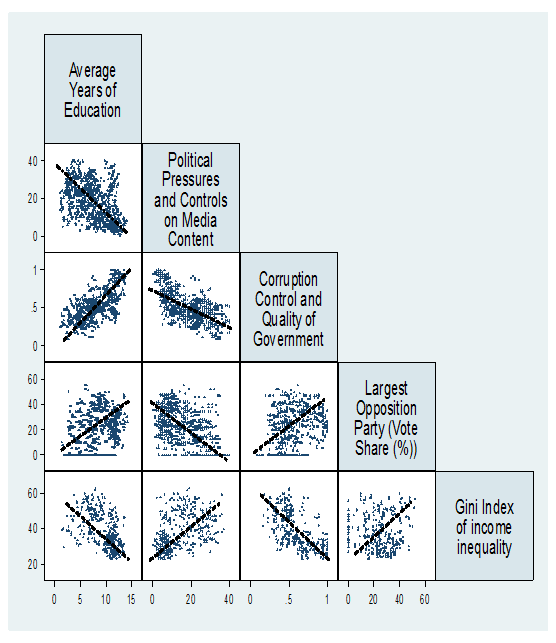TUNESS Chart of the Week (TCW), Friday Dec 21, 2012
As we commemorate the second anniversary of the Tunisian resolution, we take a closer look at what was back then one of the main aspirations of the population, that’s a fair and equitable income distribution.

To examine some of the underlying factors associated with the income inequality around the world, we analyzed data from more than 150 countries over a period ranging from 2000 to 2010. The chart confirms that a high level of income inequality (as captured by the GINI Index) is usually encountered in countries where corruption and absence of rule of law seem to be the main characteristics of the local administration and the government bureaucracy. Moreover, the allocation of national resources among the population are found to be biased toward certain groups at the expense of others when the internal political scene is dominated by one major actor with no (or marginal) counter-power role played by the opposition. The partiality of the media that are influenced by certain groups of interests often close to the ruling party and the modest education level of the population ( unaware of their rights and unequipped to properly defend their interests) contribute to the deterioration of the situation and the marginalization of certain groups and regions in the country.
(Chart prepared by TUNESS Research Team)
Data source: World Bank Development Indicators; Database of Political Institutions; International Country Risk Guide; Institution of Health Metric and Evaluation
